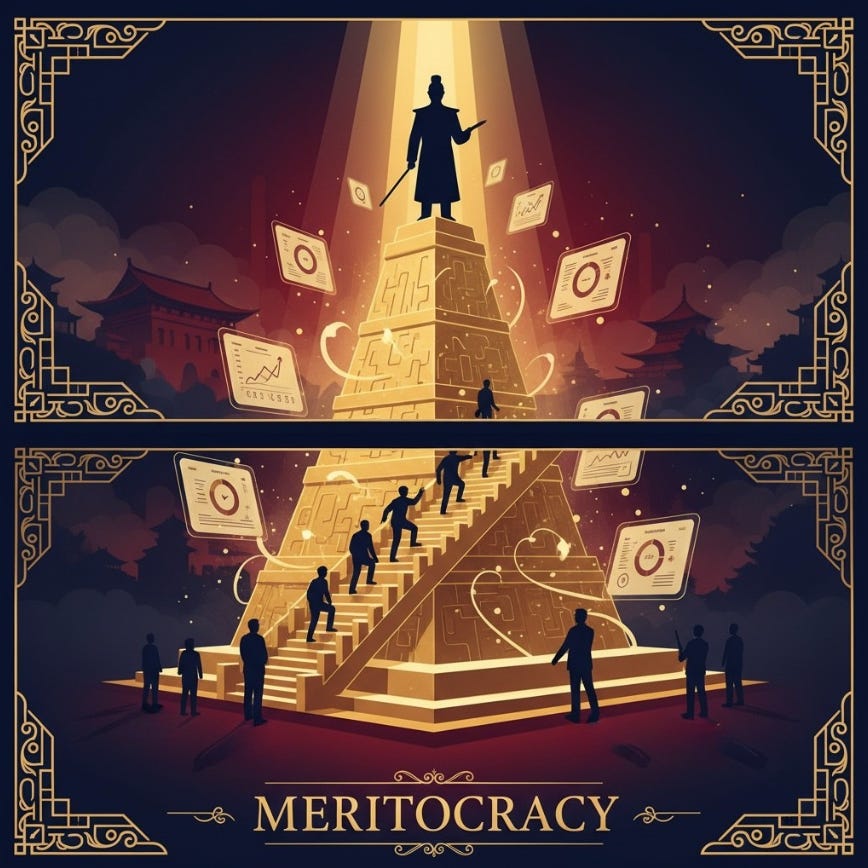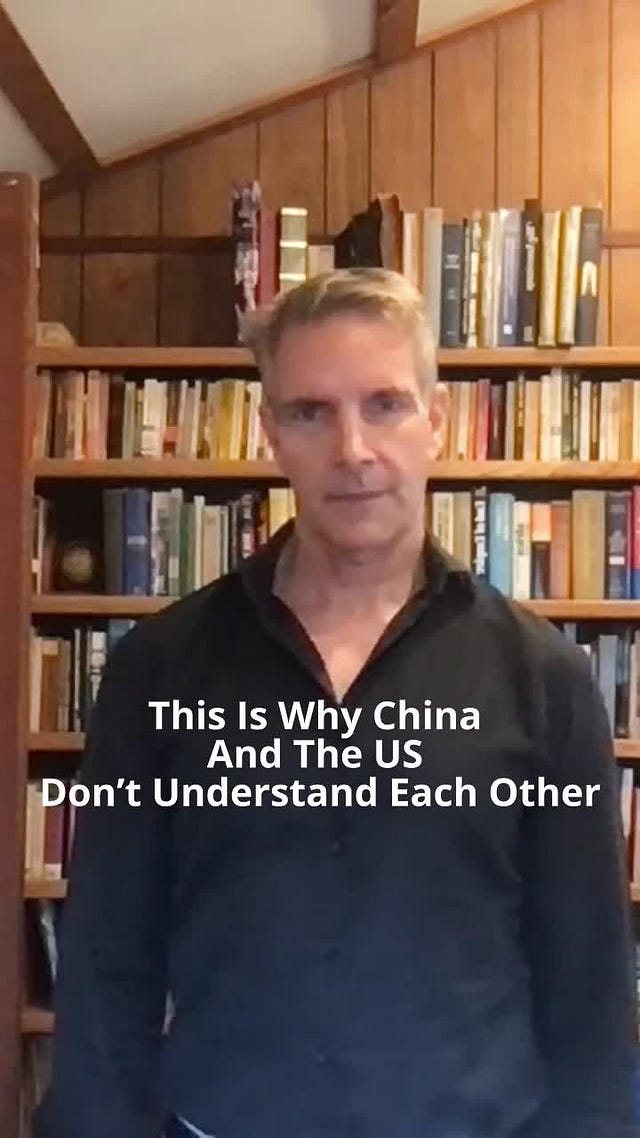Tuesday Edition — The Meritocratic Core: How China Selects Its Leaders
How the Chinese government really works
The Chinese government is not democratic; it does not hold elections.
It is built on something entirely different: meritocracy, which is based on experience, results, and efficiency.
From the village level to the national leadership, officials rise through a long system of performance testing. The goal is to select competent administrators who can deliver results rather than politicians who can win votes.
This system is often misunderstood. Western observers call it authoritarian because it lacks competition between parties. But inside China, leadership is measured not by how popular they are with voters, but by how effectively they govern. It is a merit-based system with a clear hierarchy and continuous accountability.
From Local to National: How the System Works
At the village level, members are elected to self-governance bodies, not part of the state administrative ladder. Therefore, Most Chinese officials start at the township or county level through Party and civil-service recruitment, then rotate across posts as they advance. Their performance is evaluated against measurable goals: local GDP growth, job creation, public satisfaction, environmental protection, and party discipline.
Officials who meet or exceed these goals are promoted. Those who fail are sidelined or demoted. Over time, the process repeats through multiple levels: county → city → provincial → national. This path can take decades, and only the most competent move up.
By the time an official reaches the State Council or Politburo level, they have managed regions larger than many countries. The premier and most members of the Politburo Standing Committee have each governed major provinces or municipalities before reaching Beijing.
This steady rise via performance forms the core of China’s political meritocracy. It ensures that the people at the top have administrative experience, technical competence, and proven abilities, not just political loyalty or voter popularity.
The Party Organization Department
At the center of this process is the Organization Department of the Communist Party of China, the institution that oversees all senior appointments, from mayors to ministers. It maintains detailed personnel files on millions of officials, tracking their education, evaluations, and disciplinary records. The system functions like a nationwide human resources network for the government.
This department also administers training through the Central Party School, where promising candidates study policy, economics, and ideology before taking higher office. It is part education, part testing ground. Those who perform well advance.
Continuity is one of the system’s core strengths. Instead of short electoral cycles, administrators develop deep experience and knowledge through years of service. That consistency keeps long-term work, infrastructure, poverty reduction, and technology strategy on course.
Meritocracy in Cultural Context
China’s emphasis on merit over popularity reflects its cultural foundations. The Confucian tradition places moral duty and competence above personal ambition. Government is viewed as a public service, not a contest for power.
Hofstede’s Long-Term Orientation and Collectivism explain much of this stability: individuals see themselves as part of a collective mission to sustain stability and prosperity over generations.
Trompenaars’ Particularism also applies. Rules are flexible when outcomes serve social harmony.
Schwartz’s Hierarchy and Harmony reinforce the idea that respect for authority is not blind obedience but a way to preserve coherence in large, interdependent systems.
This combination produces a state that prizes predictability. When citizens trust that the system will remain stable and work to better their lives over the long term, they cooperate more easily. That trust sustains the government’s legitimacy without elections.
Hornby’s Archetypes and Meritocracy
Hornby’s framework helps explain why China’s meritocratic system works the way it does.
The North (Leader) archetype drives the system’s hierarchy, authority flows from clear direction, measurable achievement, and long-term planning. Advancement depends on demonstrating control and competence, not on persuasion or charisma.
The South (Worker/Craftsman) gives the system its practical base. Officials begin at lower levels, learning by doing, mastering administrative skills through direct experience. Each promotion is earned through tangible results, the same way a craftsman proves mastery through repeated, competent work.
The Blue (Guardian) ensures that meritocracy remains disciplined and rule-bound. This archetype’s focus on order, structure, and duty shapes the evaluation process: performance is documented, records are audited, and conduct is closely monitored.
Together, these archetypes create the behavioral logic behind Chinese meritocracy. The North defines authority by performance, the South perfects it through skill and endurance, and the Blue protects it through consistency and rule enforcement.
Leadership by Competence
Leaders who rise through this structure are shaped by it. Xi Jinping served in rural Shaanxi when he entered government service, then climbed through local and provincial posts before becoming president. Premier Li Qiang, who managed Shanghai and Zhejiang, advanced after years of economic planning and crisis management.
This does not mean the system is free from politics or personality. But the system focuses on and rewards competence and experience first.
The Weaknesses of Meritocracy
Because advancement depends on quantifiable results, some officials focus on short-term metrics, GDP growth, or construction projects, rather than social or environmental sustainability. Excessive central control can suppress experimentation, and local leaders may avoid risk to protect their careers.
Why It Matters
China’s success in growing its economy, eliminating poverty, building infrastructure, creating opportunity for its people, moving to clean energy, reversing desertification, and much more, rests on this meritocratic foundation.
The system produces continuity and professional administration, qualities that many democracies struggle to maintain across election cycles.
It’s a different cultural perspective. Meritocracy without elections requires trust in institutions rather than individuals. For China, that trust comes from results. As long as citizens believe the system delivers, it retains legitimacy.
The Chinese model is not about ideology; it’s about performance. It demonstrates that other models than democracy can be successful. And in that sense, it offers a different answer to a universal question:
How do you build a government that actually works?
More cultural perspectives on TikTok and YouTube





